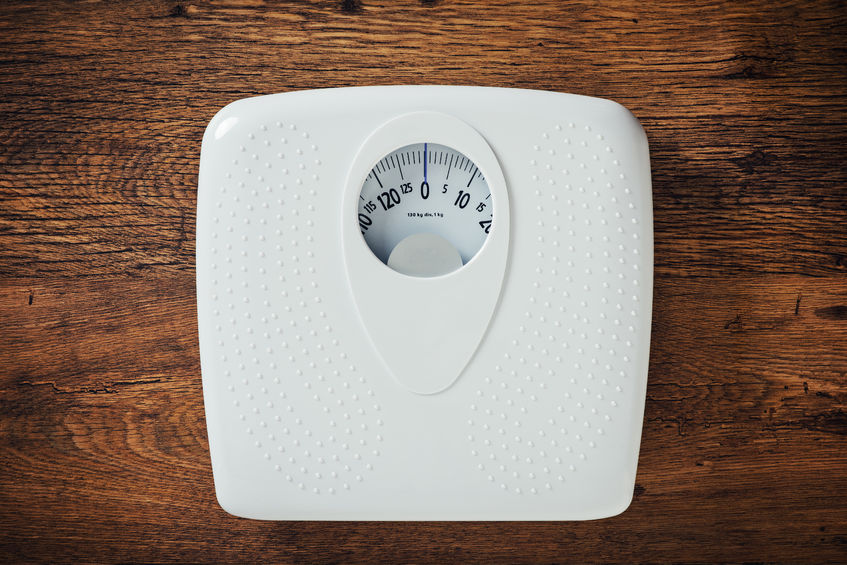Strength training doesn’t necessarily mean hitting the weights so hard that you wind up looking like a muscle-bound bodybuilder. Even working light dumbbells can provide major health benefits. Yes, you’ll build up your muscles, but the main purpose of strength training is to help your overall well-being for the long term.
How Important is Strength Training?
Whether you call it resistance training or strength training, it’s one of the best things that you can do for your body. As we get older, we lose bone tissue at a faster rate than we produce it. This is especially the case among people who live a mainly sedentary lifestyle. The loss of bone mass or density not only leads to issues with posture, but also general weakness.
Strength training helps to offset your loss of bone through what is known as “bone remodeling.” It helps develop cells known as osteoblasts, which help rebuild bone. Many people perform aerobic exercises to stay fit. While these are good for your overall health, and can also help stimulate the production of osteoblasts in the lower body, weightlifting is the recommended method to help ensure that the bones throughout the body remain healthy and strong.1
What Does the Research Say?
There is solid scientific evidence that increasing your muscle mass by lifting weights can do much more than improve your physique – this form of exercise can also deliver critically important health benefits. Here are just a few of them:
· Control Insulin – According to a study published in the medical journal Diabetes Care, lifting weights on a regular basis can increase sensitivity to insulin in people who have been diagnosed with pre-diabetes as well as diabetes. It showed that performing a strength training regimen two times a week could help control insulin swings.2
· Inflammation – We need a certain amount of inflammation to warn us that we’ve suffered some sort of injury or are developing an illness, but too much can lead to a lot of different problems, including heart disease. One study showed that regular strength training can help increase the production of cytokines – proteins which can help to quell an overabundance of inflammation.3

· Fat loss – You may think that aerobic exercise and dieting are the only ways to shed pounds and keep them off, but you might want to think again. Researchers at Penn State conducted a study consisting of three groups of people who were on a diet. One group didn’t perform any exercise, the second only did aerobic exercise, and the third combined aerobics with strength training. At the end of the study, the researchers found that all the participants had lost an average of 21 pounds, but the group that combined aerobics with strength training lost six more pounds of fat than the others. According to the results, the participants who were lifting weight were shedding mainly fat – while the others were losing fat and muscle.4
· Heart health – The Journal of Applied Physiology published a study showing that resistance training not only increases muscular strength, it also lowers blood pressure when resting. The researchers concluded that strength training could be used as a medical intervention method to reduce blood pressure and lower the risk of heart disease.5
Other Reasons to Consider Strength Training
Strength training is one of the most effective things we can do to help ensure our muscles stay strong and we have the best chance of staying healthy as we get older. These are just a few of the other benefits that have been linked to lifting weights on a regular basis:
· Increasing bone strength – Hip fractures are a serious matter at any age, but they can prove deadly to older people. Additionally, bone loss can lead to not only rounded shoulders but also the possibility of developing a hump. One study found that men who followed a strength training regimen for four months not only increased the density of their hip bones by nearly 4 percent, they also raised their levels of osteocalcin – an indicator of bone growth – by almost 20 percent.6
· Increasing flexibility – You could lose 50 percent or more of your flexibility by the age of 70 – and it’s possible that by the age of 30, most of us become 20 percent less flexible. This can ultimately wreak havoc on your joints. But strength training may help fix this problem. The International Journal of Sports Medicine published a study that showed that a four-month resistance training regimen could increase shoulder and hip flexibility by more than 30 percent. Participants in the study showed an 11 percent flexibility increase during a sit-and-reach exercise – a common test to measure flexibility in the lower back, hips, and hamstrings.7
· Regulating insulin levels from carbohydrates – If you tend to take in a lot of carbohydrates such as rice, white bread, and potatoes, you might not realize that your level of insulin (which helps regulate the amount of sugar in the blood) rises substantially as a result. This can be a major problem, because when your insulin numbers are elevated on a regular basis, your risk of heart disease and diabetes goes up. Researchers studying insulin levels and exercise analyzed two groups of men. One followed only an aerobic exercise program, while the other worked out with weights two times a week in addition to following an aerobic regimen. They found that the insulin levels of men who combined strength training and aerobics were 25 percent lower after eating a carb-rich meal than the men who only did aerobics.8
· Increasing your metabolism – Researchers conducted a study and found that men who followed a strength training regimen for six months saw their resting metabolism rate increase by 7 percent. According to the researchers, strength training tends to have a more pronounced effect on metabolism in men than women.9

· Benefits for older adults – Researchers at the University of Alabama at Birmingham and Carroll University found “overwhelming” evidence that strength training can benefit older people. It not only increases power, strength, and muscle mass, it also helps make performing daily, routine tasks much easier. In addition, according to the researchers, older adults who lift weights are more likely to participate in other types of spontaneous exercise. They suggest that older people train two days a week, on average.10
Safety Tips for Starting a Strength Training Regimen
If, after learning more about the potential benefits of resistance training, you’re inspired to begin your own strength training program, that’s great. You’ll enjoy the benefits of a slimmer appearance, but more importantly, you’ll enjoy significantly improved health as a result. Keep in mind, though, you shouldn’t immediately head over to your nearest gym and start pumping iron. If you don’t have a careful plan, you could seriously hurt yourself.
The first thing you need to do is talk to your doctor, to make sure this type of regimen will be right for you. If you get the go ahead, your next conversation should be with a trainer at a gymnasium. He or she will help you determine the best way to get started.
Quality not Quantity
At the beginning of your program, focus on technique. It’s understandable if you want to get through the workout as quickly as possible, but if your form isn’t sound, you could be setting yourself up for a major injury. No matter what type of exercises you’re doing to build your muscles, listen closely to your instructor and follow his or her directions to the letter. Start with basic moves, and then expand your horizons.
It might also be tempting to ditch your new workout routine if you feel sore, or if you don’t see results after a few weeks. Just remember that the more you stick to a regular routine of lifting weights, the more coordinated and stable you’ll feel. Eventually, you’ll get more and more comfortable as your routine begins to feel more natural.
Take it Easy!
Remember to take a few days off, and not to try to hit the weights like a maniac every day. That might work if you’re trying to make it in the NFL, but that’s about it. If you don’t give yourself a break every once in awhile, you won’t be giving your body time to make the changes it needs for you to enjoy the benefits to not only your health, but also your appearance.
And finally, don’t think you can keep piling on the junk food just because you’re embarking on a strength training regimen. You might be making great progress in the gym, but that won’t mean anything if you’re not eating healthy. Make sure you get enough protein in your diet to support your increased muscles, but don’t forget to include carbs for energy as well as healthy fats. A good training regimen is nothing if you don’t support it with a sensible nutrition plan.
For more health news you can use, keep reading:
Boswellia Serrata Extract – Reduce Pain with Tree Sap?
3 Detox Drink Recipes (that actually taste delicious!)
Sources:
1.http://time.com/4803697/bodybuilding-strength-training/?cid=2017012&XID=time-health-hub
2.http://care.diabetesjournals.org/content/21/8/1353
3.https://www.ncbi.nlm.nih.gov/pmc/articles/PMC2933442/
4.http://www.foxnews.com/health/2013/12/02/what-best-for-weight-loss-cardio-or-strength-training.html
5.https://pdfs.semanticscholar.org/de44/40ee59d7777afa4b682e865183e1069a8945.pdf
6.https://www.ncbi.nlm.nih.gov/pubmed/8335581
7.https://www.ncbi.nlm.nih.gov/pubmed/11842358
8.https://academic.oup.com/biomedgerontology/article/61/5/480/630015/Effects-of-Aerobic-and-Resistive-Exercise-Training
9.https://www.ncbi.nlm.nih.gov/pubmed/15107011
10.https://www.researchgate.net/publication/8598201_Effects_of_Resistance_Training_on_Older_Adults

I’m gone to convey my little brother, that he should also
go to see this weblog on regular basis to take updated from most up-to-date news update.
asmr 0mniartist
Very good info. Lucky me I ran across your website by chance (stumbleupon).
I have saved it for later! 0mniartist asmr
Thanks designed for sharing such a good thinking, piece of writing is
pleasant, thats why i have read it fully asmr 0mniartist
Hi there, I enjoy reading all of your article post.
I like to write a little comment to support you. 0mniartist asmr